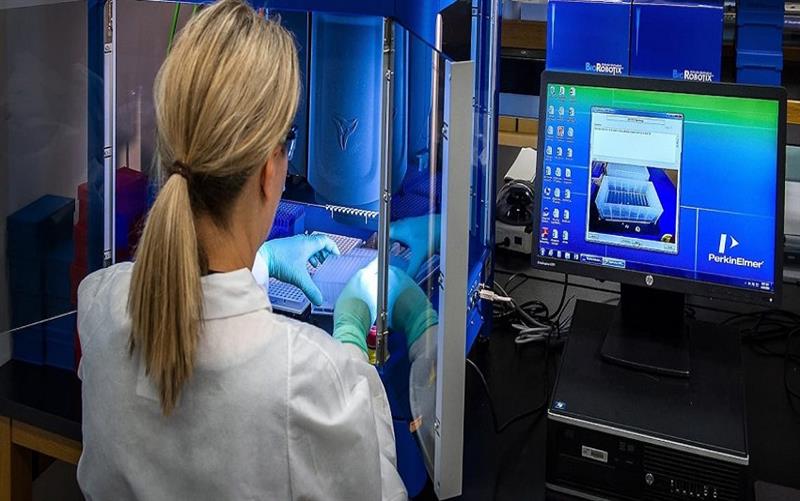
Cutting-edge software solutions that improve patient care, expedite processes, and promote innovation are reshaping the healthcare industry. AI, wearable technology, telemedicine, EHRs—all of these innovations are changing the face of healthcare. The potential for enhancing healthcare delivery and results is immense as we continue to adopt new technologies, offering everyone a better and more productive future.
The quick development of software solutions is influencing the direction of healthcare in the future. The delivery of healthcare is changing as a result of these technologies, becoming more precise, patient-centered, and efficient. We may anticipate a healthcare system that is better prepared to face the problems of the twenty-first century and beyond as long as we continue to embrace these advancements.
Technology is transforming the way we receive, administer, and use medical care in the ever-changing field of healthcare. Software solutions are at the forefront of these innovations, contributing significantly to better patient care, operational effectiveness, and overall health outcomes. This blog examines how cutting-edge software solutions are reshaping healthcare to become more inventive, efficient, and patient-centered.
1. Electronic Health Records (EHRs): Improving Coordination and Patient Care
The way patient data is kept, accessed, and shared has changed dramatically with the advent of electronic health records, or EHRs. EHRs, which digitize patient information, guarantee that medical professionals have immediate access to thorough patient histories, improving diagnosis and treatment strategies. Improved patient outcomes, decreased medical errors, and improved care coordination are all made possible by the smooth exchange of information between healthcare providers.
2. Telemedicine: Expanding Access and Dismantling Barriers
In particular, telemedicine has proven to be a game-changer following the COVID-19 outbreak. By eliminating geographic boundaries and increasing access to healthcare, it enables people to have remote consultations with medical professionals. Patients, especially those who live in distant or underserved locations, can now receive healthcare more easily and conveniently thanks to telemedicine software solutions, which offer virtual consultations, remote monitoring, and even digital prescriptions.
3. Machine learning and artificial intelligence (AI): Transforming Treatment and Diagnosis
At the forefront of healthcare innovation are machine learning (ML) and artificial intelligence (AI). Large-scale data analysis is done by these technologies in order to spot trends, forecast results, and support clinical judgment. Early disease detection, individualized treatment recommendations, and even the ability to forecast a patient's reaction to a particular therapy are all made possible by AI-powered diagnostic technologies. Healthcare professionals' ability to diagnose and treat patients is changing as a result of this degree of accuracy and efficiency.
4. Patient Portals: Providing Information to Patients
Patient portals give people direct access to their medical records, which empowers them. Patients can interact with their healthcare professionals, get prescription refills, access their medical information, and make appointments via these online portals. Patient portals encourage a sense of ownership and responsibility for one's health by encouraging transparency and involvement. This leads to greater treatment plan adherence and better health outcomes.
5. Wearable Medical Technology: Ongoing Tracking and Preemptive Treatment
Fitness trackers and smartwatches are examples of wearable health technology that is growing in popularity for ongoing health monitoring. These gadgets gather data in real time on a range of health parameters, including heart rate, level of physical activity, and sleep habits. Proactive care and early intervention are made possible by sophisticated software tools that evaluate this data and provide insights and alarms. Continuous monitoring, for example, can help patients with chronic illnesses by enabling rapid modifications to their treatment plans.
6. Blockchain Technology: Protecting Medical Information
Blockchain technology is revolutionizing the healthcare industry by providing a transparent and safe means of managing patient data. Blockchain protects patient data integrity and confidentiality by offering a decentralized, immutable ledger. This technology can improve patient privacy, stop data breaches, and expedite administrative tasks like medical billing and consent management.
7. Healthcare Analytics: Encouraging Decisions Based on Data
Big data is used by healthcare analytics to support well-informed decision-making. Healthcare practitioners can spot patterns, anticipate epidemics, and allocate resources as efficiently as possible by evaluating huge datasets. Improved care quality, cost savings, and population health management are all made possible by advanced analytics systems. Predictive analytics, for instance, can forecast patient admissions, which helps hospitals better allocate staff and resources.
8. Coordinated Health Systems: Optimizing Functions
Integrated health systems combine several aspects of healthcare into one platform, such as patient administration and billing. These technologies improve interoperability across various agencies and healthcare providers, expedite processes, and lessen administrative responsibilities. Healthcare businesses can attain a comprehensive understanding of patient care through the integration of different systems, resulting in improved outcomes and increased operational efficiency.